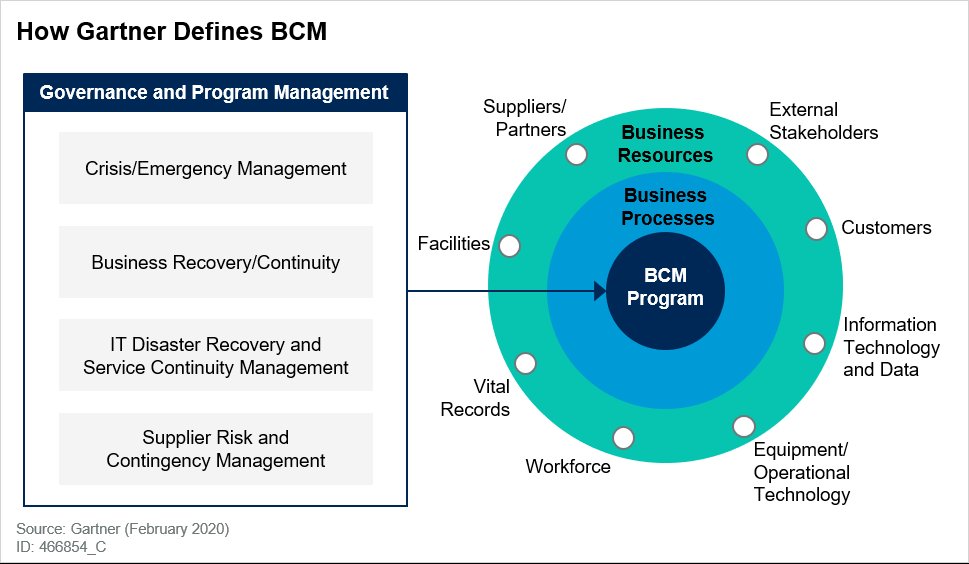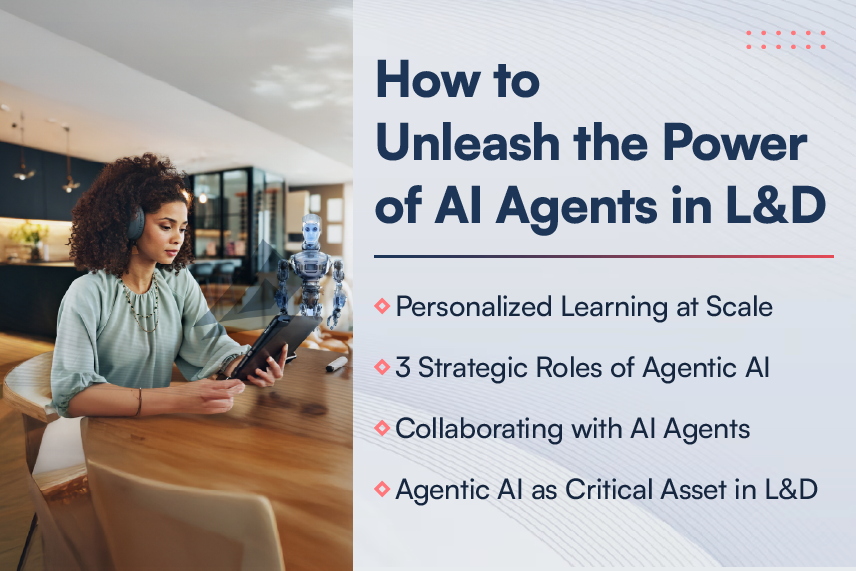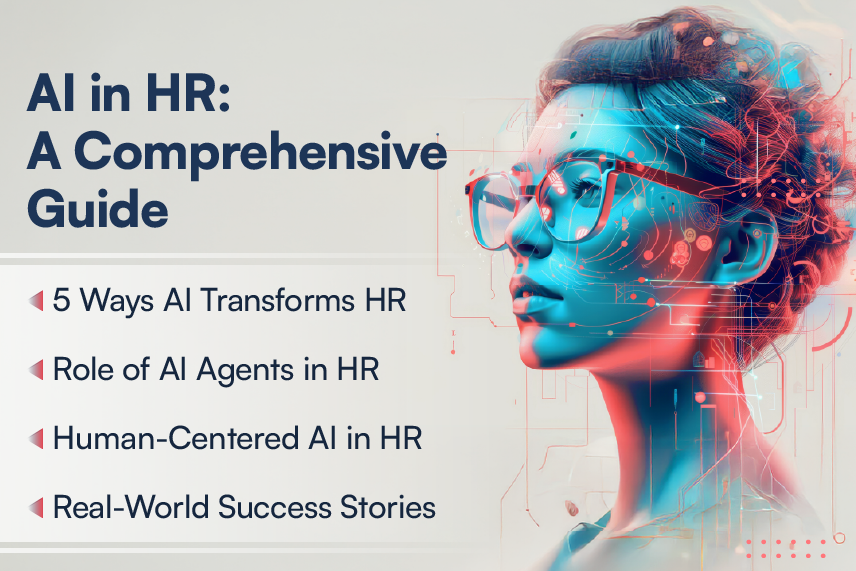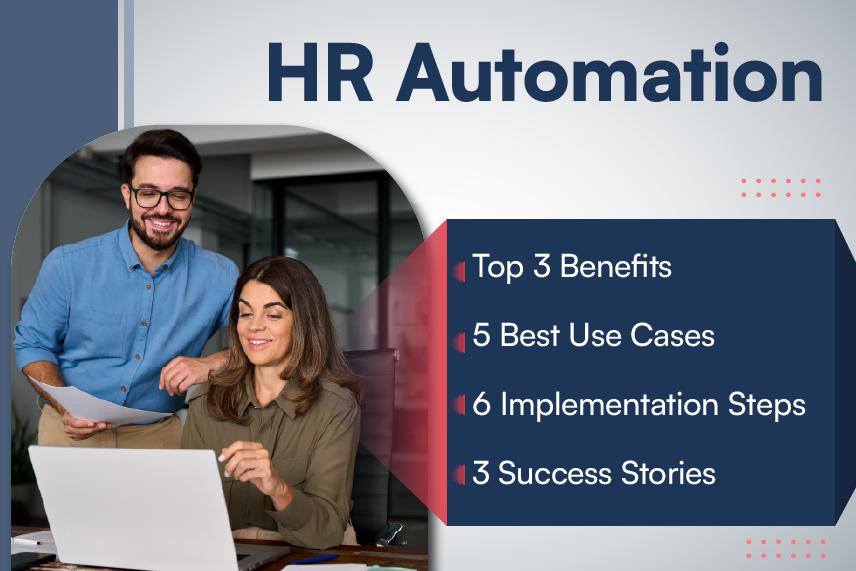
The COVID-19 pandemic has resulted in a massive humanitarian upheaval. While governments rush to tackle the crisis, businesses across the world are witnessing unprecedented disruptions. Primarily, there are challenges in maintaining supply chains and workforce management. The large-scale travel restrictions and quarantines are resulting in fluctuations in business revenues. In such situations, it becomes imperative for companies to ensure Business Continuity.
WHEN IS A BUSINESS CONTINUIYT PLAN EFFECTIVE
Gartner illustrates Business Continuity Management as-

The COVID-19 pandemic has resulted in a massive humanitarian upheaval. While governments rush to tackle the crisis, businesses across the world are witnessing unprecedented disruptions. Primarily, there are challenges in maintaining supply chains and workforce management. The large-scale travel restrictions and quarantines are resulting in fluctuations in business revenues. In such situations, it becomes imperative for companies to ensure Business Continuity.
WHEN IS A BUSINESS CONTINUIYT PLAN EFFECTIVE
Gartner illustrates Business Continuity Management as-
Many businesses do have elaborate Business Continuity Plans (BCP). However, most of these remain on paper and when it comes to execution, majority of the organizations struggle. Statistics claim that in 2019, only 24.5% of companies intended to revise their BCPs. The reasons for the failure of a BCP could range from plans being not revisited continually from a feasibility standpoint to account for the VUCA world, to an assumption that BCP implementation is the sole responsibility of certain departments in the organization and the rest of the team has no role to play. It is also a problem when there is too much reliance on the plan. People forget that when a disaster happens, a lot depends on how quickly businesses can think on their feet and adapt and not just go by the pre-decided order.
HOW WE DO IT
Harbinger Group, a technology company in the services and products space, has successfully executed its Business Continuity Plan in the current COVID-19 crisis. Almost 95% of its employees are at present working from home and there has been zero business disruption, so far. This was achieved primarily because of a “live” BCP as well as continuous forward thinking and proactive actions taken by the management.
The Harbinger BCP execution includes the following dimensions-
Customer communication-
- · Harbinger ensures that standard customer communication drafts are revised daily to account for the constant changes in the pandemic situation.
- · The drafts are focused on informing the customers on current local situation and Harbinger’s actions for ensuring zero work disruption. It also talks about what precautions the company is taking for client-facing employees.
- · There is also constant communication between projects leadership and customers using leveraging tools like remote conferencing, email, chat, and more.
Employee communication-
- · We follow cadence of daily situation updates via a standard company email ID.
- · An emergency hotline and assistance email ID for employees to report issues concerning infrastructure, finance, HR (including medical issues) has been set up as well.
Infrastructure readiness-
- · With an already proactive procurement of laptops, VPN, and data cards, when the crisis hit, Harbinger was ready to roll out things, with no supply-demand issues faced. With this initiative, Harbinger also buffered from the cost escalations for critical infrastructure items which typically happens during such times.
- · We have innovative technology solutions to account for public infrastructure shortcomings such as last mile communication issues and internet bandwidth and speed management.
- · There exists upfront planning for remote support of all critical infrastructure components.
- · We also had clear identification of a skeletal infra maintenance team and made prior arrangements for all their possible needs, including redundant connectivity as well as food supply (given that during a city-wide lock-down, all eateries are closed).
- · The fact that almost all the company internal processes related to finance, sales, and HR are already driven by apps on the Cloud meant that there was no disruption to these processes.
Employee engagement and collaboration-
- · Harbinger successfully leverages collaboration apps to ensure that project teams can continue to collaborate remotely. In fact, we ensure that all team members have these apps installed on their mobiles.
- · The company also conducts engagement events online. For example, we have innovative initiatives like “VItaMIN” (Virtual Mingling), a daily 30-minute online audio/video/text chat wherein all the employees sign on to the conferencing app, do some interesting activities (spelling contests, polls), share their thoughts and feelings, and also receive some counselling/ perspectives from their senior leaders.
- · Harbinger ensures that the team continues to learn even when staying remote by proactively providing them access to internal online learning apps as well as online course platforms like Udemy.
- · Along with this, we leverage the company website and social media platforms to constantly keep our people updated.
Strategy shifts to cater to the changing environment-
- · Harbinger has operationalized an Opportunity Task Force comprising of a cross-functional team that meets once every two days to take stock of the changing needs of our customers and think of new business offerings that could be relevant to the market in these times.
- · In times such as these when the business community is reaching out to one another for market inputs, we make sure that our industry experience, highlighted through the content we generate, provides insights to deal with the changing business scenarios.
- · There are daily reviews of the company’s financial health and corresponding actions are taken to ensure that the plans work out.
In times like these, while a BCP definitely helps, it is also crucial for businesses to be open to thinking differently, making quick changes to their strategy as needed, and keeping in mind that an effective BCP implementation has to cater to multiple dimensions. For instance, while we as a company go through some major internal changes, we simultaneously continue to support our customers, thus reflecting the agility with which our team functions. This is also the time when the leadership has to truly lead from the front. After all, having a team aligned to the company vision is what matters the most.






